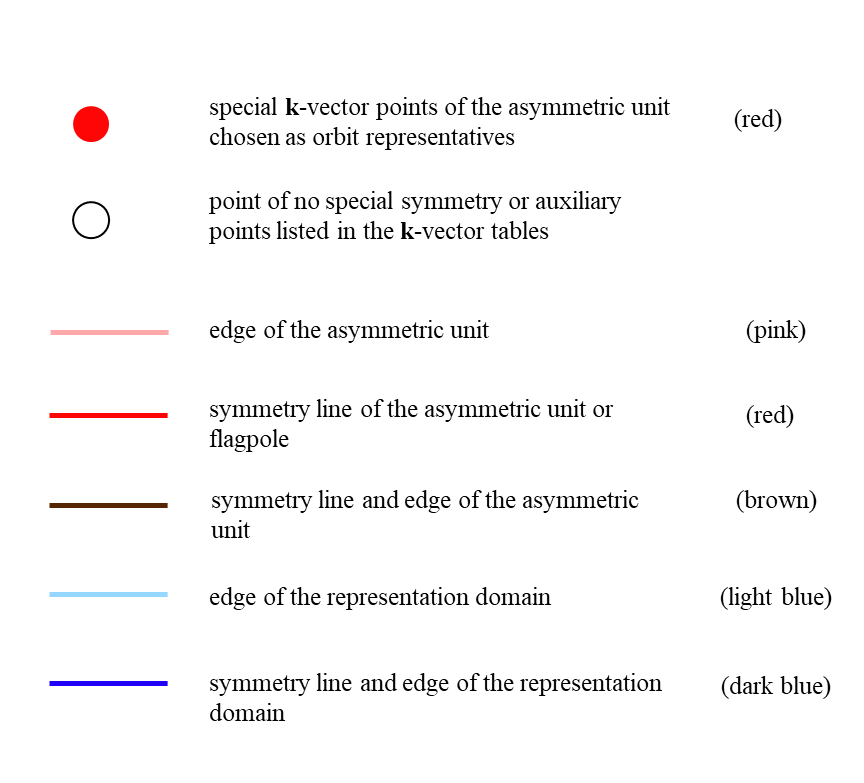Guide to the k-vector figures
The headline of each Brillouin-zone figures includes the same information as the k-vector tables: the Hermann-Mauguin symbol of the layer group, the ITE number and the symbol of the arithmetic crystal class to which the layer group belongs. Different figures for the same arithmetic crystal class are distinguished by the geometric conditions for the lattice. The corresponding conditions for the lattice parameters of the reciprocal lattice are indicated after the symbol of the reciprocal-plane group.
The Brillouin zones are two-dimensional objects in the reciprocal space. The coordinate axes are designated by kx and ky, and the origin with coefficients (0,0) always concides with the centre of the Brillouin zone and is called Γ (indicated as GM in the k-vector tables). In the Brillouin-zone figures, the representation domains of L&W are compared with the asymmetric units of ITA. A statement of whether the representation domain of L&W and the asymmetric unit are identical or not is given below the k-vector table. The asymmetric units are often not fully contained in the Brillouin zone, but protrude from it, in particular by flagpoles (for a discussion of flagpoles description the reader is referred to [3]).
The representatives of the orbits of k-vector symmetry points or of symmetry lines, as well as the edges of the representation domains of L&W and of the asymmetric units are brought out in colours.
-
Symmetry points: A representative point of each orbit of special k-vector points is designated by circle filled in red with its label also in red. Note that a point is coloured red only if it is really a special point, i. e. a point whose layer little co-group is a supergroup of the little co-groups of the points in its neighbourhood. A point is marked by its label and an empty circle if it is listed in the correspondig k-vector table but is not a point of special symmetry.
-
Symmetry lines: A line is coloured in red with its label also in red only if it is a special k-vector line, i.e. the layer little co-groups of the points on the line are supergroups of the little co-groups of the points in its neighbourhood. The colour of the line is pink for an edge of the asymmetric unit which is not a symmetry line. The colour of the line is brown with the name in red for a line which is a symmetry line as well as and edge of the asymmetric unit. The edges of the representation domains are coloured light blue if the representation domain of L&W does not coincide with the asymmetric unit. Edges of the representation domain and their labels are coloured dark-blue if they are symmetry lines. Flagpoles are always coloured in red. Coordinate axes, edges of the Brillouin zone or auxiliary lines are displayed by thin solid black lines.

[1] Litvin, D. B. & Wike, T. R. (1991). Character Tables and Compatibility Relations of the Eighty Layer Groups and Seventeen Plane Groups. New York: Plenum Press. [Abbreviated as L&W].
[2] International Tables for Crystallography, Volume E: Subperiodic Groups (2010). Edited by V. Kopsky & D. Litvin, 2nd edition. Chichester: Wiley. [Abbreviated as ITE].
[3] de la Flor, G., Souvignier, B., Madariaga, G. & M. I. Aroyo. Acta Cryst A (in review).
 Help
Help
 Help
Help
